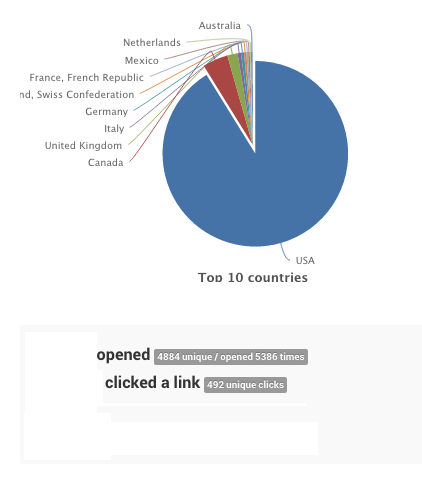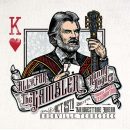By Hunter Scott
How important is your mailing list for the sake of promoting your upcoming show? Very.
But how reliable is it? Depending on which number you look at.
I once overheard a conversation from a club promoter who was requiring an artist to purchase 100 tickets in advance for $300, a custom widely known as ‘Pay-to-Play’.
“If you turn around and sell these tickets for $10 each” explained the promoter, “you’d have $1000, a profit of $700!” The enthusiastic musician quickly agreed. He then turned around to his band mate, explained the situation and said “We have over 1,000 people on our mailing list. All we need is for ten percent of them to show up, we’ll make $700. Easy.”
The problem with this ‘easy’ calculation is that the band was looking at the wrong numbers. Remember the glory days of Myspace, when people had 100,000 “friends” and thought they will sell out concert halls as a result?
 Enter the Realm of Open Rates
Enter the Realm of Open Rates
So you’ve sent out an email letting your fans know about the show. And just for the sake of keeping things simple, we’ll say that all your mailing list subscribers are within a reasonable distance of your show. The real question is the percentage of people who actually opened your email with the show announcement. This is known as your ‘open rate’. An important analytical tool, the open rate is available in many professional email marketing providers, such as MailChimp, TopSpin, Reverb Nation and Constant Contact, to name a few. When sending out an email, the system embeds an ‘HTML Tracker’ that marks the email as opened on your end. It is worth mentioning that the tracker is embedded in an image (usually the banner of the newsletter) and therefore it will only be triggered if the recipient has downloaded the images along with the email, which is why open rates are estimated only, rather than exact science.
If sending the email blast about your show is like yelling your announcement into a crowd, knowing how many people opened your email via the open rate equates to knowing how many people in that crowd actually heard your announcement. By adding on the open rate element, we now know how many people heard you in that crowd. Think quality over quantity.
Throw In the Element of Your Click-Through Rate
Building on that same analogy, you now know how many people heard you, but does that mean they are even interested in it? The best way to narrow those numbers further is by utilizing the click-through rate. Adding a trackable link to your email blast is another key element. For example, adding a link for more info about the show such as “click here for the event’s Facebook page” is a great way of knowing how many people are truly interested and the click-through rate you receive is considered very accurate.
Last Thought: Put Your Money Where Your Mouth Is
Of course, nothing really gets you as close to the number of people to expect at your show as the number of people who purchased a ticket. Consider referring your trackable link to a purchase page, either on the band’s website using PayPal or a full service ticketing site such as EventBrite or Brown Paper Tickets.
Questions or comments? Hunter may be reached by visiting www.LaFamos.com
Hunter Scott is Head of Marketing & Publicity for the Los Angeles-based agency LaFamos PR & Branding, and Creative Director of its Social Media Division, TrendSocial. He also serves as a Digital Marketing Instructor on the faculty of Musicians Institute, College of Contemporary Music.









